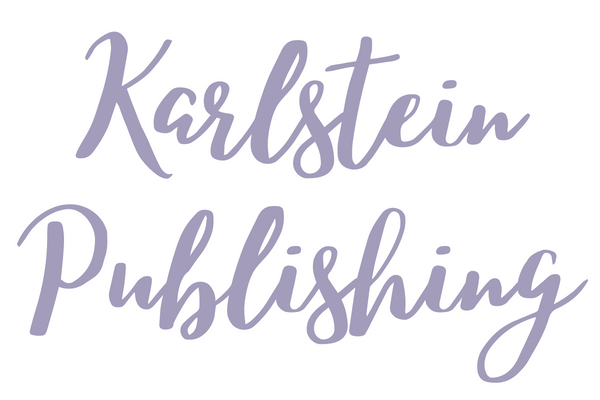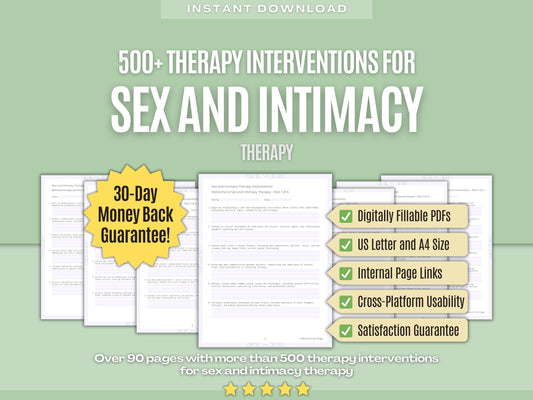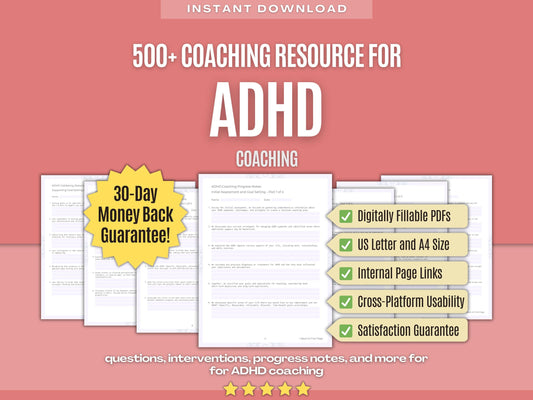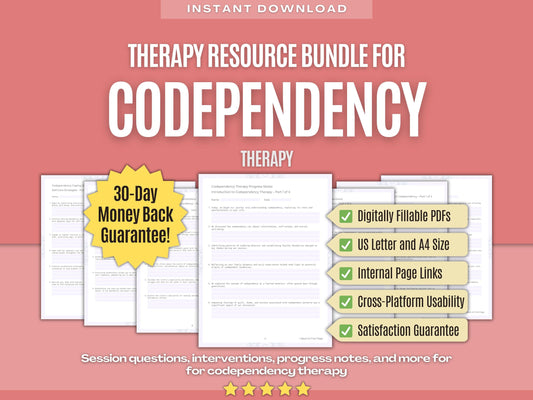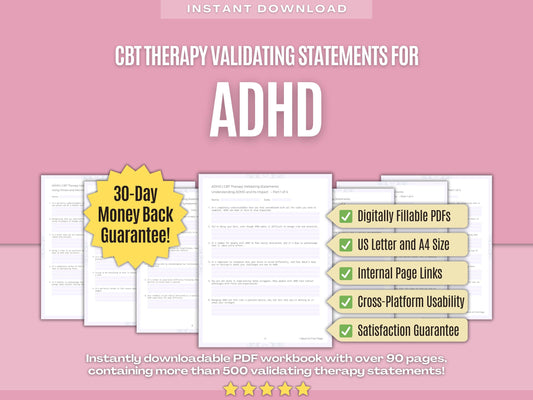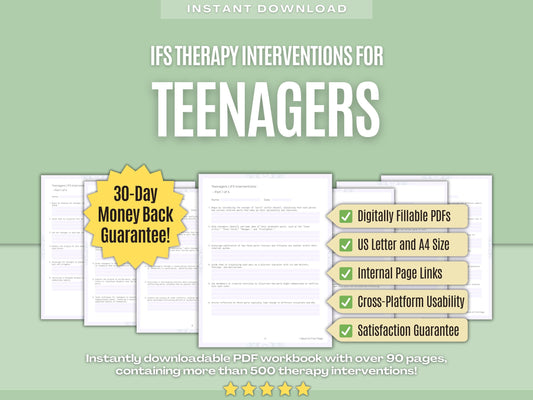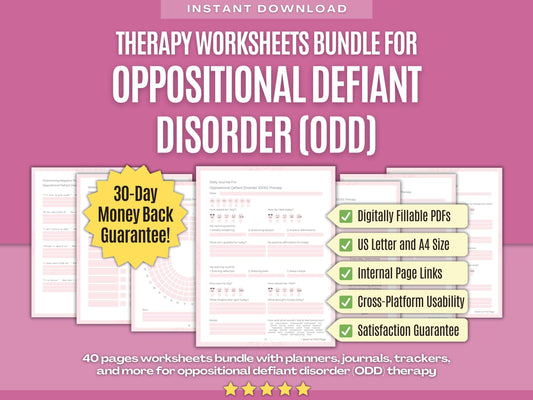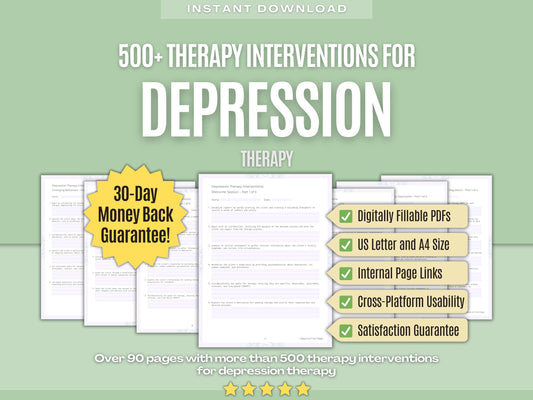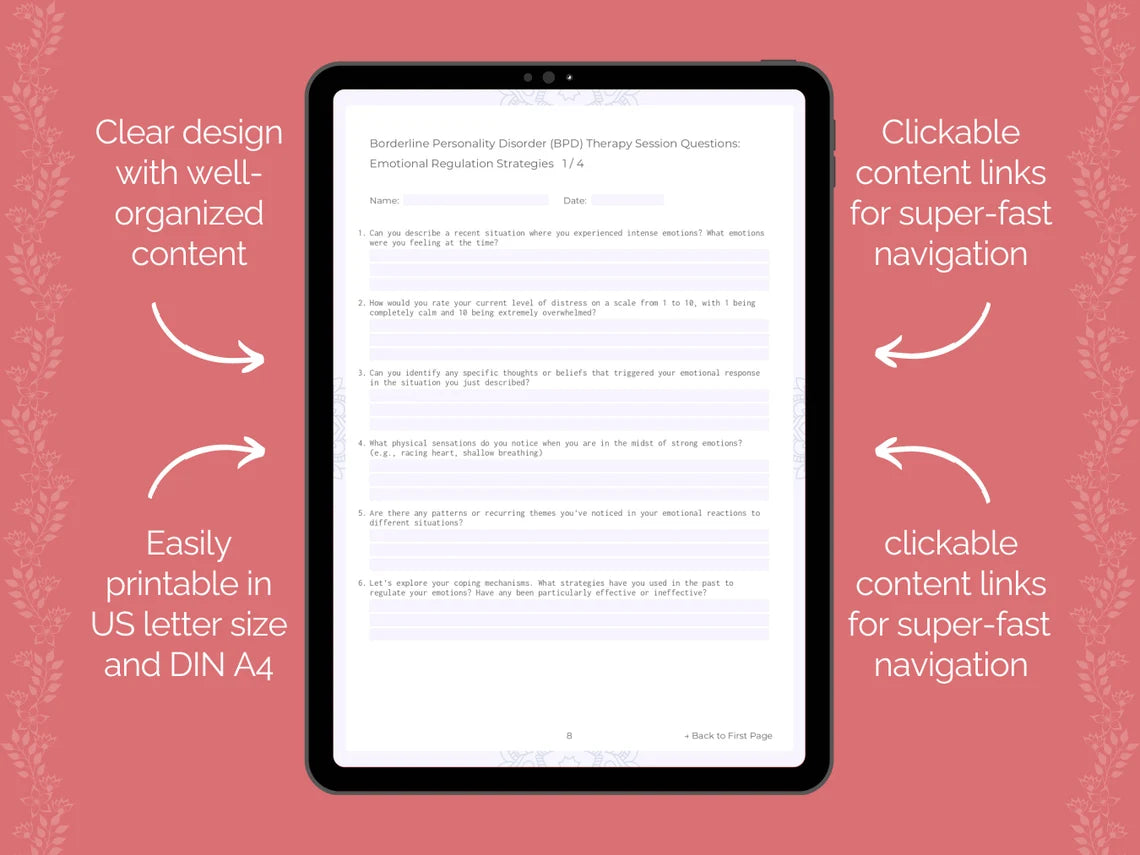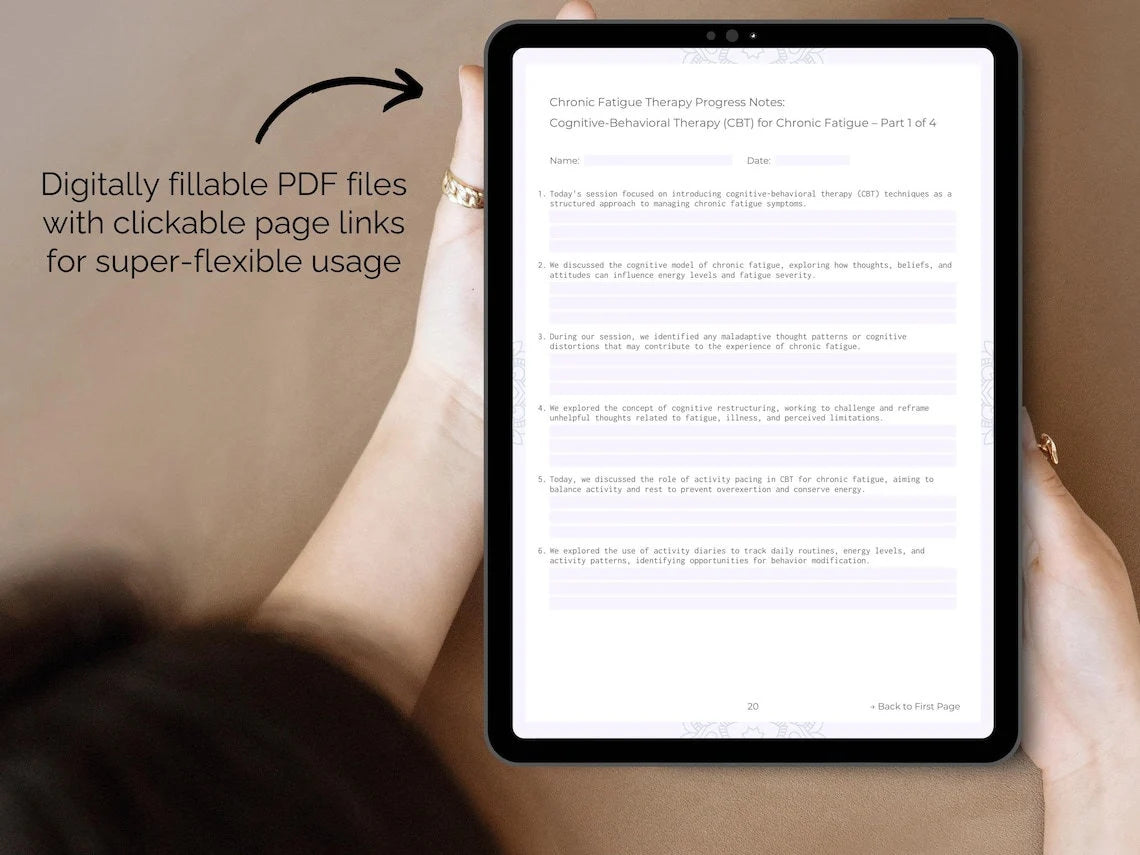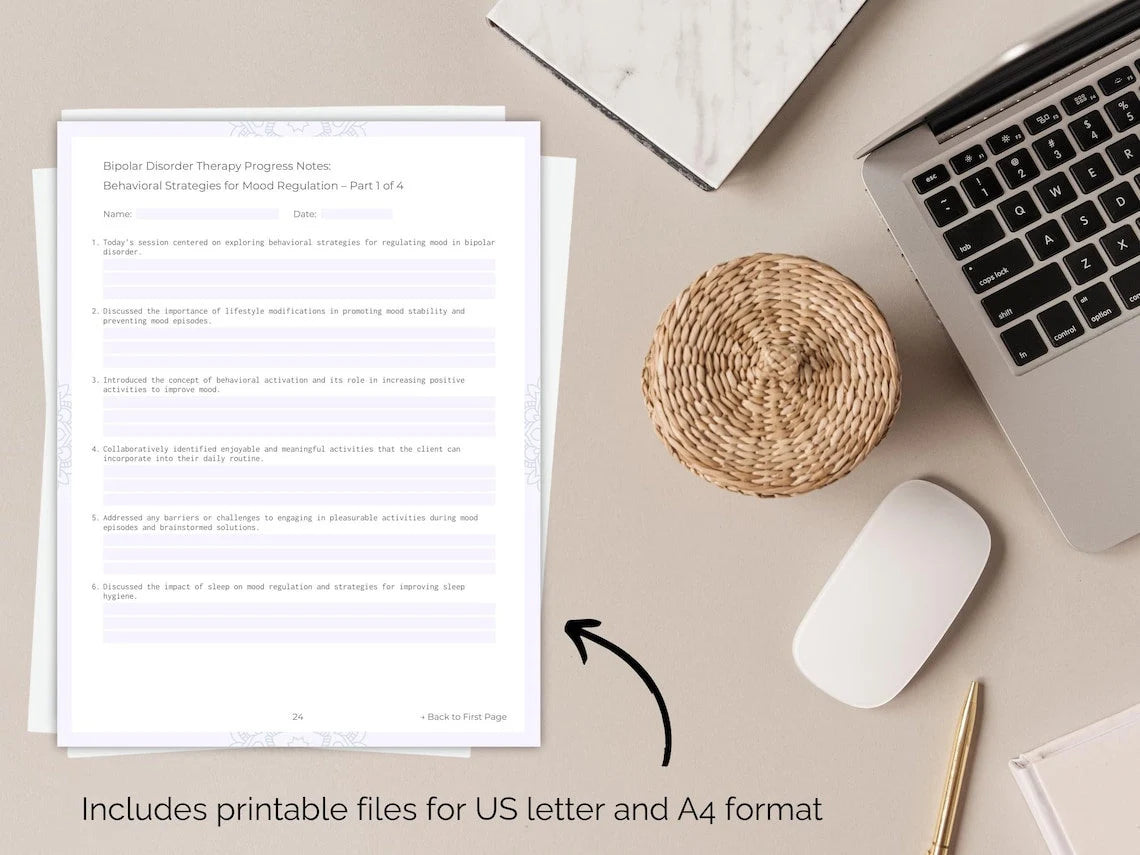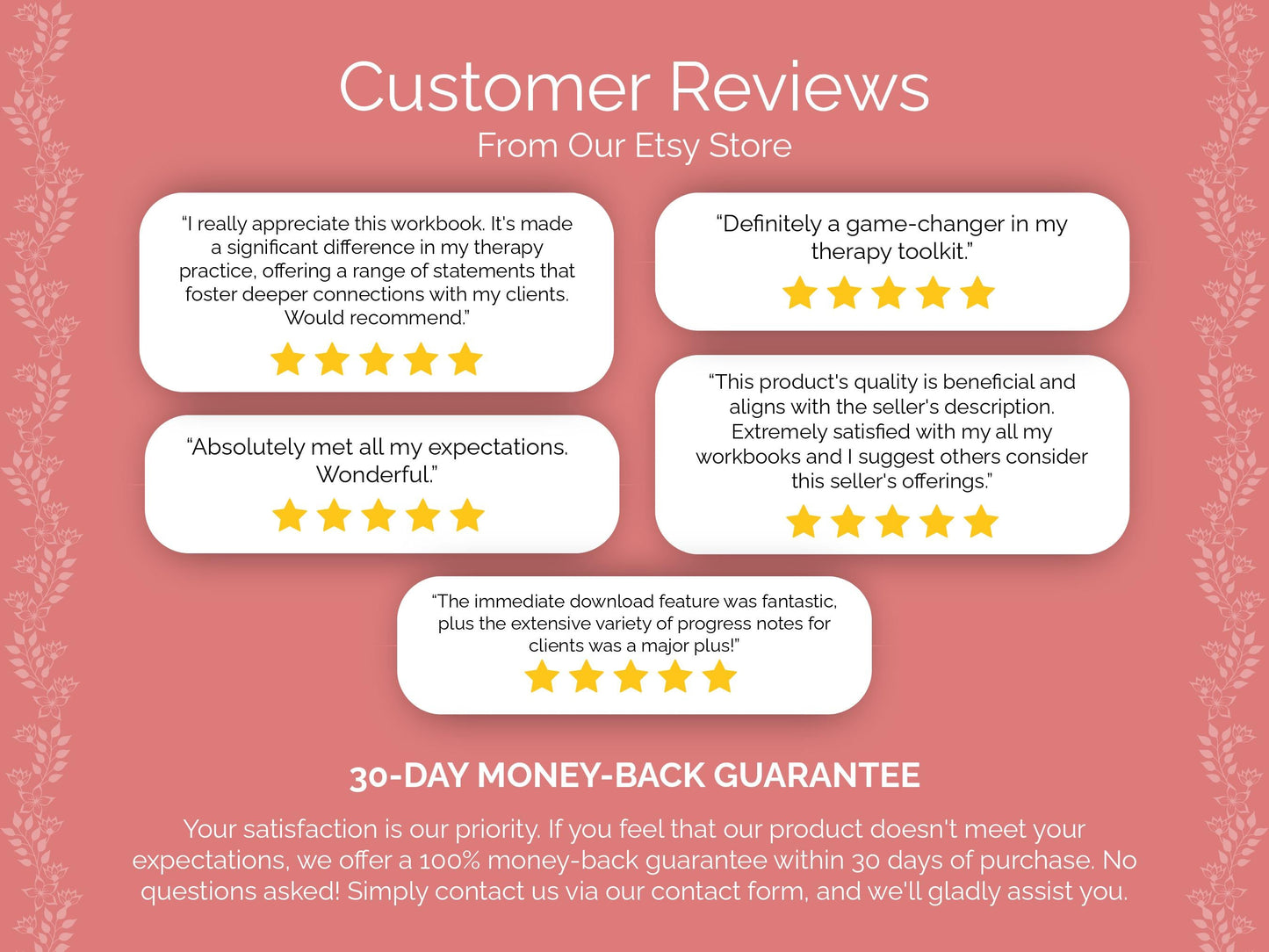Elevate Your Therapy and Guide Your Clients to Inner Healing with Our Couples Therapy Interventions! ✨
1. Beginning Together
- Initiate the session by warmly welcoming both partners and setting the tone for a collaborative and supportive therapeutic environment.
- Conduct a thorough assessment of the couple's relationship history, including significant events, communication patterns, and areas of conflict or tension.
- Normalize the challenges that couples face when seeking therapy and reassure them that seeking help is a positive step towards growth and healing.
- Educate the couple about the stages of therapy and what to expect as they progress through the counseling process, including potential challenges and breakthroughs.
- Collaboratively establish therapeutic goals with the couple, focusing on specific areas of improvement and desired outcomes for the relationship.
- Explore the couple's strengths and resources, highlighting areas of resilience and resilience that can support their journey towards positive change.
- Encourage partners to express their emotions openly and authentically, creating a safe space for vulnerability and emotional expression.
- Validate each partner's perspective and experiences within the relationship, fostering empathy and understanding between them.
- Explore the couple's expectations of each other and how these expectations may influence their relationship dynamics and satisfaction.
- Address any immediate concerns or crises within the relationship, providing support and guidance to help partners navigate difficult situations.
- Validate the couple's strengths and resilience, emphasizing their capacity to overcome challenges and grow together as a team.
Need more? Find all 500+ Therapy Interventions for Couples Therapy in our Digital Workbook!
2. Understanding Relationships
- Begin by inviting each partner to share their perspective on the dynamics of their relationship, encouraging them to express both their strengths and challenges openly.
- Facilitate a discussion about relationship patterns and cycles, identifying recurring themes or behaviors that may contribute to conflict or disconnection.
- Introduce the concept of emotional bids and turning towards each other, helping partners recognize and respond to each other's bids for connection and support.
- Discuss the role of expectations in relationships and how unmet expectations can lead to frustration and conflict, helping partners communicate and negotiate their needs more effectively.
- Explore the influence of culture and upbringing on relationship dynamics, helping partners understand and respect each other's cultural backgrounds and values.
- Use role-playing exercises to help partners practice assertive communication and conflict resolution skills in a safe and supportive environment.
- Introduce the concept of emotional intelligence and empathy, helping partners develop greater self-awareness and understanding of each other's emotions.
- Use narrative therapy techniques to help partners reframe their relationship story and identify strengths and resources that can support positive change.
- Explore the impact of past traumas or unresolved issues on the relationship, helping partners heal from past wounds and build resilience together.
- Discuss the role of forgiveness and reconciliation in relationships, helping partners navigate past hurts and rebuild trust and intimacy.
- Use experiential exercises, such as art or movement-based activities, to help partners explore and express their emotions in nonverbal ways.
Need more? Find all 500+ Therapy Interventions for Couples Therapy in our Digital Workbook!
3. Mindfulness for Couples
- Begin by introducing the concept of mindfulness to the couple, explaining its benefits for cultivating awareness, presence, and compassion in their relationship.
- Teach partners mindful breathing techniques to regulate their emotions and reduce stress, emphasizing the importance of using breath as an anchor during difficult conversations or conflicts.
- Introduce the practice of mindful speaking, where partners learn to communicate with clarity, honesty, and empathy, fostering deeper understanding and connection in their conversations.
- Lead partners in mindfulness exercises focused on gratitude and appreciation, helping them cultivate a sense of gratitude for each other and their relationship.
- Introduce the practice of loving-kindness meditation, where partners cultivate feelings of compassion, kindness, and goodwill towards themselves and each other.
- Use guided imagery and visualization exercises to help partners envision their ideal relationship and identify concrete steps they can take to manifest that vision.
- Introduce mindfulness-based stress reduction techniques, such as progressive muscle relaxation or body awareness exercises, to help partners manage stress and anxiety in their relationship.
- Explore the concept of impermanence in relationships, encouraging partners to embrace change and uncertainty with mindfulness and acceptance.
- Facilitate mindfulness practices that incorporate art or creative expression, allowing partners to explore their feelings and experiences in nonverbal ways.
- Guide partners through mindfulness exercises focused on forgiveness and letting go of resentment, helping them release past hurts and cultivate compassion for themselves and each other.
- Introduce mindfulness practices for cultivating resilience and coping with relationship challenges, such as loving-kindness meditation or gratitude journaling.
Need more? Find all 500+ Therapy Interventions for Couples Therapy in our Digital Workbook!
4. Dialectical Behavior Therapy (DBT) for Couples
- Begin by introducing the core principles of Dialectical Behavior Therapy (DBT) to the couple, emphasizing the importance of balancing acceptance and change in the relationship.
- Introduce the concept of dialectics, where partners learn to hold opposing truths or perspectives simultaneously, promoting greater understanding and acceptance in the relationship.
- Teach partners distress tolerance skills to help them cope with intense emotions and crises in the relationship without resorting to unhealthy coping mechanisms.
- Introduce interpersonal effectiveness skills to help partners communicate their needs and boundaries effectively, assertively, and respectfully.
- Teach partners emotion regulation techniques to help them manage and cope with difficult emotions in the relationship, reducing impulsivity and reactivity.
- Use role-playing exercises to help partners practice new communication and problem-solving skills in a safe and supportive environment, providing feedback and encouragement.
- Introduce the concept of dialectical dilemmas, where partners explore and balance conflicting needs or desires in the relationship, promoting compromise and flexibility.
- Facilitate discussions about coping ahead and proactive problem-solving in the relationship, helping partners anticipate and prepare for potential challenges or triggers.
- Teach partners interpersonal effectiveness skills for managing conflicts and negotiations in the relationship, including strategies for assertiveness, validation, and compromise.
- Explore the concept of dialectical abstinence in the relationship, where partners agree to refrain from engaging in harmful or destructive behaviors, promoting safety and trust.
- Use radical openness exercises to help partners share their vulnerabilities and fears with each other, promoting greater intimacy and connection.
Need more? Find all 500+ Therapy Interventions for Couples Therapy in our Digital Workbook!
5. Enhancing Communication (IPT)
- Begin by establishing a safe and supportive environment where both partners feel comfortable expressing themselves openly and honestly.
- Use the speaker-listener technique to facilitate structured and respectful communication between partners, ensuring that both partners have the opportunity to express themselves fully while the other listens attentively.
- Teach partners active listening skills, such as paraphrasing, summarizing, and reflecting back what they hear, to demonstrate understanding and empathy towards their partner's perspective.
- Use communication exercises, such as role-playing or scenario-based simulations, to help partners practice new communication skills and techniques in a safe and supportive environment.
- Explore the impact of past experiences or traumas on communication styles and patterns within the relationship, helping partners understand and empathize with each other's communication behaviors.
- Use communication worksheets or exercises to help partners identify and express their needs, desires, and boundaries within the relationship, promoting greater clarity and understanding between them.
- Introduce techniques for de-escalating conflicts and diffusing tension in the moment, such as taking a break or using humor to lighten the mood.
- Use communication games or activities to help partners practice active listening, empathy, and validation skills in a fun and engaging way.
- Explore the role of validation and validation strategies in the relationship, helping partners learn to acknowledge and empathize with each other's experiences.
- Use communication exercises to help partners explore and express their emotions in a safe and supportive environment, fostering greater emotional intimacy and connection.
- Introduce techniques for managing communication overload and setting limits on the amount of time spent discussing sensitive or difficult topics, to prevent feelings of overwhelm or burnout.
Need more? Find all 500+ Therapy Interventions for Couples Therapy in our Digital Workbook!
6. Emotion-Focused Therapy (EFT) for Couples
- Begin by creating a safe and supportive therapeutic environment where both partners feel comfortable expressing their emotions openly and honestly.
- Use emotion-focused techniques such as emotion coaching and validation to help partners validate and empathize with each other's emotions, fostering a deeper emotional connection.
- Introduce the concept of emotional responsiveness, where partners learn to attune to each other's emotional cues and respond with empathy and support.
- Explore the concept of emotional triggers or sensitivities within the relationship, helping partners identify and understand the underlying emotions and needs behind reactive behaviors.
- Use emotion-focused communication skills training to help partners express their emotions effectively and assertively, promoting greater emotional intimacy and understanding.
- Explore the impact of past emotional experiences or traumas on current relationship dynamics, helping partners heal from past wounds and develop healthier emotional patterns together.
- Use emotion-focused role-playing exercises to help partners practice empathetic listening, validation, and emotional expression in a safe and supportive environment.
- Explore the concept of emotional blocks or barriers that may hinder emotional intimacy and connection within the relationship, helping partners identify and overcome these barriers together.
- Use emotionally focused couple therapy interventions such as enactments or enactments to help partners explore and express their emotions in the moment, promoting greater emotional awareness and connection.
- Explore the concept of emotional attunement and synchronization within the relationship, where partners learn to tune in to each other's emotional rhythms and respond with empathy and support.
- Use emotionally focused interventions such as two-chair work or empty chair exercises to help partners explore and resolve inner conflicts or ambivalence related to their emotions.
Need more? Find all 500+ Therapy Interventions for Couples Therapy in our Digital Workbook!
7. Psychodynamic Approaches to Couples Therapy
- Begin by exploring each partner's family history and early attachment experiences, recognizing that these dynamics often shape individuals' relationship patterns.
- Use open-ended questions to elicit each partner's thoughts and feelings about their upbringing, facilitating deeper exploration of family dynamics and intergenerational patterns.
- Foster empathy and understanding between partners by helping them recognize how their past experiences may be shaping their current interactions and conflicts.
- Encourage the couple to explore their fantasies and dreams, recognizing that these can provide valuable insights into their unconscious desires and fears.
- Explore the couple's shared narratives and myths about their relationship, recognizing that these stories often reflect underlying beliefs and values.
- Use role-playing exercises to help the couple explore different perspectives and empathize with each other's experiences.
- Encourage the couple to explore their feelings of ambivalence or uncertainty about the relationship, recognizing that these emotions are normal and can provide valuable information for growth.
- Use art or creative expression as a means of accessing unconscious thoughts and feelings within the therapeutic process.
- Encourage the couple to explore their experiences of loss or grief, recognizing that these emotions may be impacting their relationship dynamics.
- Explore the couple's fears and anxieties about intimacy, recognizing that these may be rooted in past experiences or attachment wounds.
- Use psychodramatic techniques to help the couple externalize and explore their internal conflicts and struggles within the therapeutic space.
Need more? Find all 500+ Therapy Interventions for Couples Therapy in our Digital Workbook!
8. Harmonizing through Music Therapy
- Begin by inviting the couple to share their musical preferences and experiences, creating a space for them to connect over shared interests and memories.
- Use music listening exercises to help the couple relax and unwind, creating a soothing atmosphere conducive to open communication and connection.
- Encourage the couple to create personalized playlists together, selecting songs that resonate with their shared experiences, values, and aspirations.
- Invite the couple to engage in music-making activities together, such as singing, playing instruments, or composing songs, to foster collaboration and creativity.
- Explore the use of rhythm and movement within the couple's musical interactions, helping them connect with each other on a physical and emotional level.
- Use guided imagery or visualization exercises accompanied by music to help the couple explore their inner worlds and tap into their subconscious thoughts and feelings.
- Encourage the couple to create musical rituals or traditions within their relationship, such as sharing a favorite song before meals or before bedtime, to foster connection and intimacy.
- Explore the couple's cultural or ethnic musical heritage, using it as a means of exploring their identities and values within the relationship.
- Use music as a catalyst for exploring the couple's shared memories and experiences, helping them reminisce and reconnect with the joy and love they've shared.
- Encourage the couple to use music as a form of self-expression and empowerment within the relationship, providing them with a means of asserting their individuality and agency.
- Encourage the couple to use music as a bridge for communication and conflict resolution within the relationship, providing them with a creative outlet for expressing their needs and concerns.
Need more? Find all 500+ Therapy Interventions for Couples Therapy in our Digital Workbook!
9. Closing a Session Together
- Reflect on the progress made during the session, highlighting any insights or breakthroughs achieved by the couple.
- Validate each partner's contributions and perspectives, acknowledging their efforts and willingness to engage in the therapeutic process.
- Use reflective listening techniques to empathically respond to each partner's concerns or feedback, demonstrating understanding and validation.
- Review any strategies or tools introduced during the session and discuss how they can be applied in the couple's daily lives.
- Provide reassurance and support to the couple, emphasizing the importance of self-care and maintaining open communication with each other outside of therapy.
- Encourage the couple to reflect on their experiences during the session and identify any insights or learnings they may have gained.
- Provide psychoeducation on relevant topics or skills discussed during the session, ensuring the couple has a clear understanding of therapeutic concepts and strategies.
- Address any logistical or administrative matters related to scheduling future sessions or payment arrangements, ensuring a smooth transition out of the session.
- Provide a brief summary of the session's main takeaways and action points, ensuring clarity and alignment between the therapist and the couple.
- Reiterate the therapist's availability and support between sessions, encouraging the couple to reach out if they have any questions or concerns.
- Normalize any feelings of vulnerability or discomfort experienced during the session, reassuring the couple that these are natural and part of the therapeutic process.
Need more? Find all 500+ Therapy Interventions for Couples Therapy in our Digital Workbook!
10. Reflecting on the Journey
- Invite the couple to reflect on their journey in therapy, prompting them to consider how far they've come since they began their therapeutic work together.
- Use reflective questions to help the couple explore their experiences of growth, change, and challenges throughout the therapeutic process.
- Reflect on the goals the couple set at the beginning of therapy and discuss their progress toward achieving them.
- Encourage the couple to explore how they've applied the skills and strategies learned in therapy to their daily lives and interactions with each other.
- Reflect on any challenges or setbacks the couple has faced during therapy, helping them explore what they've learned from these experiences and how they've grown stronger as a result.
- Reflect on the strengths and resources the couple has tapped into during their therapeutic journey, highlighting their resilience and ability to overcome obstacles together.
- Reflect on the role of the therapist in the couple's journey, exploring how the therapeutic relationship has facilitated their growth and transformation.
- Reflect on any unresolved issues or lingering conflicts the couple may still be grappling with, helping them identify potential next steps for addressing these concerns.
- Reflect on the couple's experiences of connection and intimacy in therapy, recognizing the moments of closeness and understanding they've shared in the therapeutic process.
- Reflect on the couple's experiences of trust and safety in therapy, exploring how the therapeutic environment has provided a space for vulnerability and authenticity.
- Reflect on the couple's experiences of empowerment and agency in therapy, exploring how they've taken ownership of their relationship and actively worked toward positive change.
We hope that our therapy interventions for Couples therapy will help you to elevate your therapy practice and guide your clients to inner healing! Do you need more therapy interventions for Couples therapy? Find them all in our Digital Workbook! Or do you have any questions or suggestions for us? Please feel free to contact us at any time!
